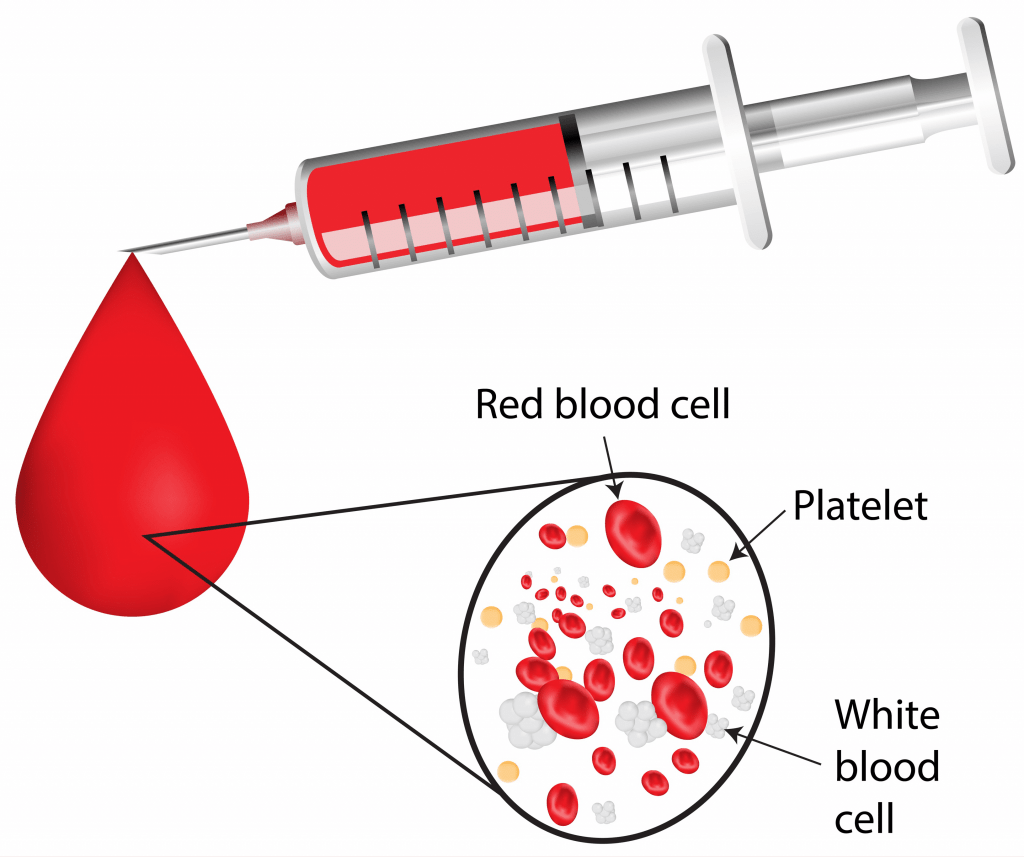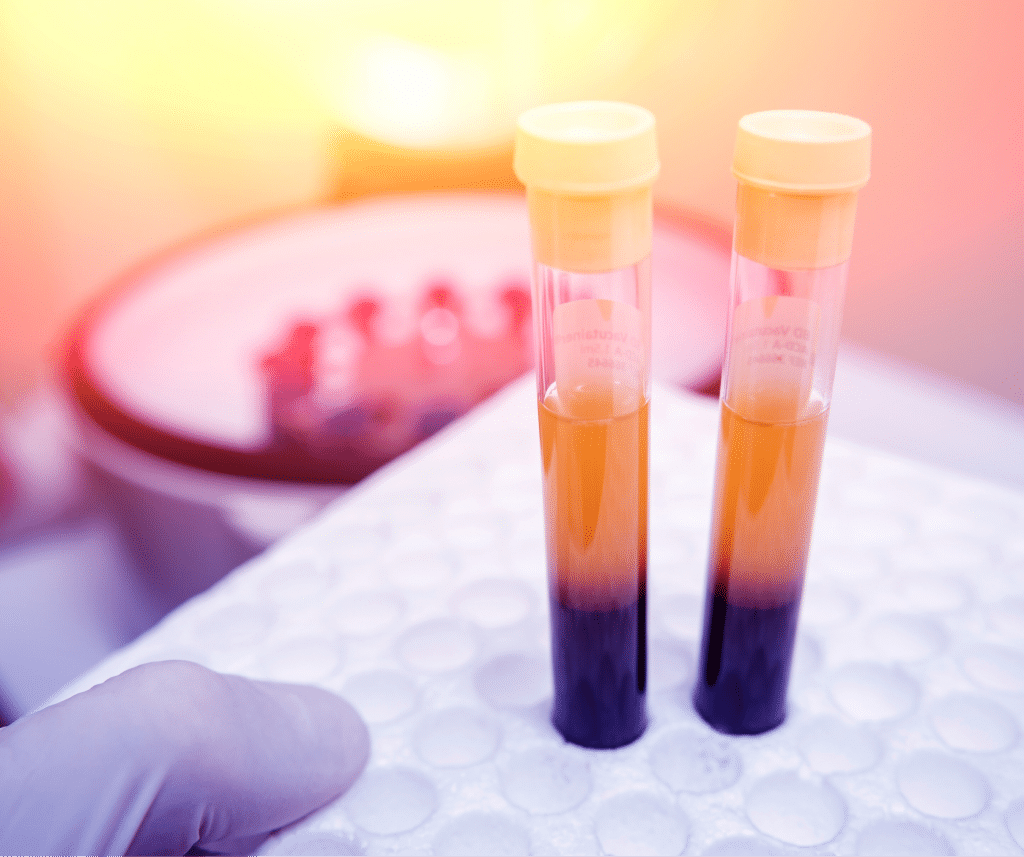Introduction
The increasing incidence of hair loss in the general population has to lead to the evolution of surgical and non-surgical methods to add cosmetic value to personality. But the success rate of such interventions and their cost-effectiveness has always been an evening tea topic for hair loss sufferers. Not to mention the side effects, such as sexual dysfunction and itching, produced by many of these medications with their use over the long haul. Since the extensive research in modern medicine has produced a lot of promising products, the surgical approach to remedy hair loss is losing popularity. One such non-surgical method is the use of Platelet Rich Plasma (PRP) for hair loss.
What is Platelet Rich Plasma (PRP)?
Platelets are ‘fuel tank’ of growth factors in the body that play an important role in coagulation, immune system, the formation of new vessels and the healing of damaged tissues. Platelets are rich in growth-promoting factors including platelet-derived growth factor (PDGF), transforming growth factor (TGF), platelet-derived angiogenesis factor (PDAF), epidermal growth factor (EGF), vascular endothelial growth factor (VEGF), and insulin-like growth factor (IGF). (1)
 Blood is composed of blood cells and plasma; the plasma contains white blood cells and platelets. PRP is made by centrifuging the patient’s blood to separate cells, plasma, and platelets. The platelets are then centrifuged again to obtain an optimal concentration of growth factors in PRP. The higher the concentration of growth factors, the better the results. A platelet concentration 2-6 times greater than blood is considered optimal for PRP. (2)
Blood is composed of blood cells and plasma; the plasma contains white blood cells and platelets. PRP is made by centrifuging the patient’s blood to separate cells, plasma, and platelets. The platelets are then centrifuged again to obtain an optimal concentration of growth factors in PRP. The higher the concentration of growth factors, the better the results. A platelet concentration 2-6 times greater than blood is considered optimal for PRP. (2)
PRP was first used during open heart surgery in the 1970s. Later, the growth factors derived from centrifuged blood were found beneficial for patients with chronic skin ulcers. More research on PRP therapy found its clinical use for a wide variety of applications in oral and maxillofacial surgery, orthopedic surgery, treatment of burns, hard-to-heal wounds, tissue engineering, and implantology. PRP is widely used in orthopedic and sports medicine to relieve pain through the natural promotion of healing in musculoskeletal diseases such as tendonitis, arthritis, ligament sprains, and tears.
How is it given? / What to expect during the procedure?
The PRP can be given in a doctor’s clinic as an outpatient treatment. Blood is drawn from the patient’s arm, spun it in a centrifuge machine which separates it into cells, platelet-poor plasma, and platelet-rich plasma. The PRP is then collected and injected at numerous sites on the scalp, especially where the hair is too thin or too less.
 “The process is meticulous — with injections beginning across the scalp, approximately at every half inch over the area of thinning hair — but typically, the entire procedure takes less than a half hour.”
“The process is meticulous — with injections beginning across the scalp, approximately at every half inch over the area of thinning hair — but typically, the entire procedure takes less than a half hour.”
-allure(3)
The injections have to be given into the fat layer below the dermis and can cause a little discomfort in some people. Although local anesthetic agents are used before giving injections, some people describe the procedure to be quite painful. The whole procedure takes about 20-30 mins. Most PRP regimen consists of 3 sessions 4-6 weeks apart and then one session after 4-6 months. But this may vary from person to person.
Contraindications to Platelet Rich Plasma (PRP) for Hair loss
The PRP therapy is contraindicated(4) in patients with:
– Acute or chronic infections
– Critically low platelet count
– Hypofibrinogenaemia.
– Hemodynamic instability
– Sepsis
– Cancer
– Chronic liver disease
– Chronic skin disease
– Anticoagulation therapy (warfarin, dabigatran, heparin)
– Platelet dysfunction syndromes
– Sepsis
– Thyroid disease
– Drug abuser
Side effects
Since this is a minimally invasive procedure, there is little to no chance of infection and spread of communicable diseases. The risks of this procedure are the same as that of getting an injection at any site of the body i.e. injury to blood vessels or nerves, the formation of scar tissue, infection, and calcification. But such events are rare. The allergy to anesthetic agents is idiosyncratic, so it’s better to have a forehand knowledge of substances you’re allergic to.
Does it work?
Dr Dubow has been doing PRP therapy for more than a year and he has already been seeing positive results. He said “About 80% of my patients have seen their shedding slow down or stop completely. A lot also see new growth and tell me their existing hair feels thicker and fuller.” (5).
A small study published in the Journal of Cutaneous and Aesthetic Surgery tested PRP on 11 men with androgenetic alopecia who showed no response to medications. They received four treatments during the period of three months (0,1,2,3) and saw their hair count increase by about 30 percent (6).
Dr. Jeffrey Rapaport is a leading practitioner in the field of using PRP injections to promote hair growth and retard hair loss. According to him, patients may notice they are losing less or minimal amounts of hair within the first few months of treatment, and soon after, they may begin to see an increase in thickness or eventual regrowth. (7)
To obtain the best possible results, the PRP therapy is given in conjunction with other hair-boost medications such as oral or topical spironolactone, minoxidil, and finasteride. (8)
PRP therapy is not for everyone with all types of baldness. PRP promotes hair growth only if hair follicles are present. People with extreme hair loss, non-existent or damaged follicles are generally not candidates for PRP hair treatment (9).
Conclusion
PRP is proving to be a promising intervention to help hair loss sufferers restore their hairstyles and boost confidence in them. The research on long term benefits of PRP therapy is still lacking but the clinical data suggests high success and satisfaction rates in certain hair loss patients, including those with hereditary hair thinning or baldness.
Since PRP is not suitable for everyone, consult a board-certified dermatologist to know if you qualify for it. Like mentioned before, the PRP injections require diligent and careful administration. Book a visit with us to have all your questions answered.
References
https://www.ncbi.nlm.nih.gov/pubmed/23648195
https://www.ncbi.nlm.nih.gov/pmc/articles/PMC6374694/#bb0165
https://www.allure.com/story/platelet-rich-plasma-hair-loss-treatment
https://www.healthline.com/health/prp-for-hair-loss#risks
https://www.refinery29.com/en-us/hair-thinning-treatment-prp-injections-review
https://www.ncbi.nlm.nih.gov/pmc/articles/PMC4134641/
https://www.aad.org/media/news-releases/prp-therapy-for-hair-loss
https://www.ncbi.nlm.nih.gov/pmc/articles/PMC6374694/
